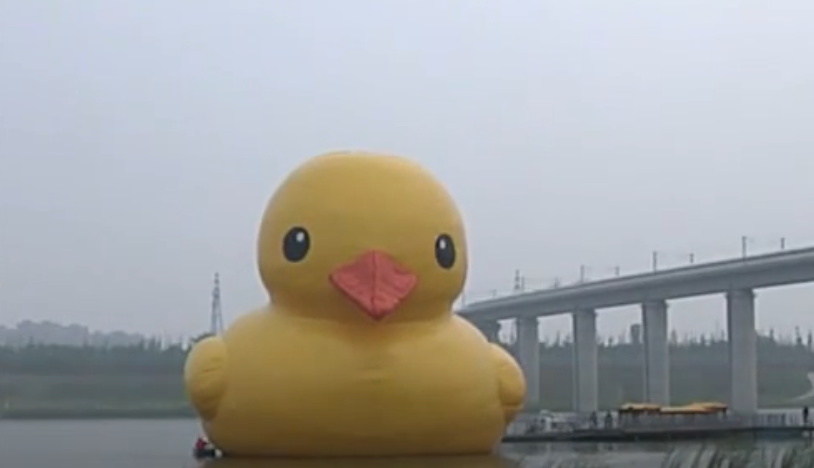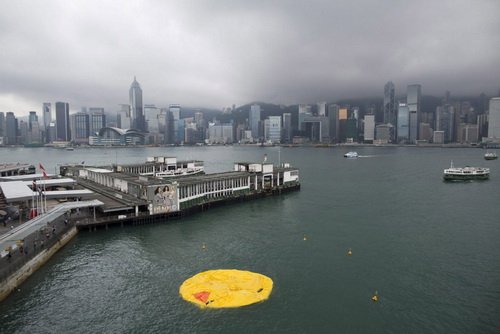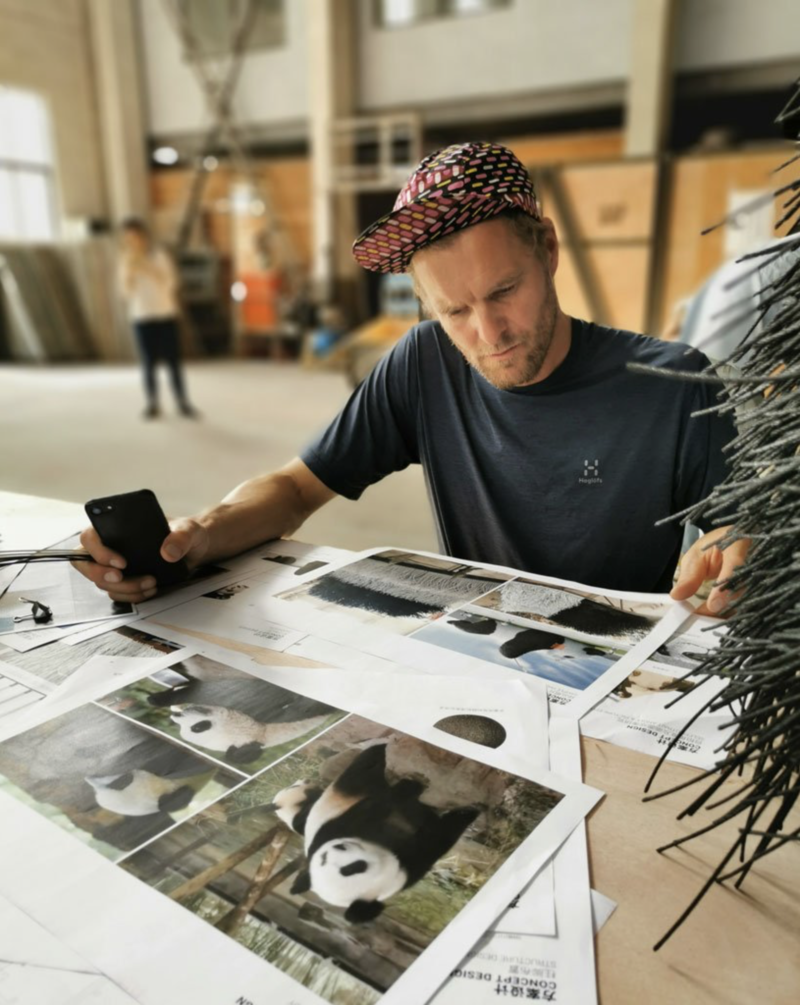Throwback Thursday: When Beijing Welcomed a Giant Rubber Duck to Its Waters
Throwback Thursday takes a look back into Beijing's past, using our 12-year-strong blog archives as the source for a glance at the weird and wonderful stories of Beijing's days gone by.
She sits tall on the still water, looking over boats and bridges. Pagodas and towering gray apartment buildings peer upward from the banks to catch her eyes, facing ever forward from either side of her round face. She is alone, but tourists flock like fowl to the lakefront to snap photographs of themselves beside her, worshiping her like a grand and golden pyramid.
Seven years ago this month, Beijing Design Week announced that a special guest would be migrating north from Hong Kong for the annual event: the Giant Rubber Duck.

With many possible waterways to choose from, it was not immediately clear where the duck would land after its 2,000-kilometer flight, but rumor had it that Houhai would house the plastic-feathered friend. However, after taking into account "traffic considerations," the city decided that such a central location was not appropriate for what was sure to be an incredible, irresistible attraction. By early August 2013, word on the street was that the Summer Palace would host the glorious bird, which was confirmed later that month, along with a second stop at Beijing Garden Expo.
Before we go any further, though, let’s get something straight. The “Rubber Duck” is not rubber at all, but an inflatable sculpture, for which rubber would not be a feasible material. Furthermore, it is not a single duck, but a series of ducks with a range of different sizes, the largest being a whopping 32 meters tall, while the duck that came to Beijing was just 18 meters tall. In fact, two ducks were brought to the capital, just in case one deflated. (Fortunately, it did not, as it once did in Hong Kong.)

The man behind the duck, Dutchman Florentijn Hofman, is a bit of an eccentric (if you hadn't guessed that already). He notably wrote on his website that the duck “has healing properties: it can relieve mondial tensions as well as define them,” in a quote that earned him the CityLab headline, "The ‘Rubber Duck’ Artist Must Be Stopped."

When the duck finally arrived, the Beijinger landed an interview with Sun Qun, director of the Beijing Design Week Committee. In the interview, he admitted that the media was beginning to focus a bit too much on the rubber duck, stealing the thunder from other Design Week novelties. "There is too much coverage on how popular it is," he said. "The Rubber Duck’s message isn’t about that. It’s public art, it’s supposed to open a discussion with the public, make people happy and feel innocent. It’s not supposed to make people angry and generate debate."
In that sense, we've never needed a Giant Rubber Duck more than now.
[Correction: This article originally mislabelled a picture of Sun Qun, director of the Beijing Design Week Committee, as creator of the duck, Florentijn Hofman. This error has now been fixed.]
READ: Throwback Thursday:
The Brazilians Who Undertook an Olympic-Worthy Expedition to London
Images: chinaculture.cn, China Daily, Designboom, Wikipedia







